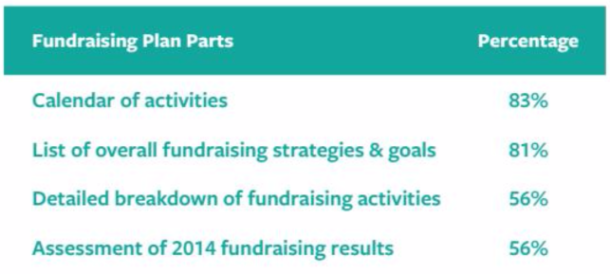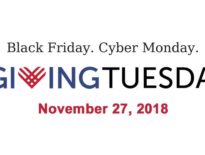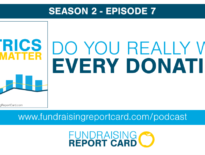There’s no doubt that data can be intimidating. Running database queries or staring at Excel spreadsheets can only be so fun. It should come as no surprise then that development directors and fundraising staff at smaller organizations struggle to find the same benefits that their peers at larger nonprofits do when it comes to data analysis. You may be thinking to yourself, “How can we analyze data when we have all these small fires to put out?”
Large organizations tend to have specific departments for data analysis and interpretation. This can make things like dirty databases easier to deal with (it’s someones job to clean it up). A development professional at a big, public university may have to slog through bureaucracy to get some data or analysis, but at least they can get it from their data department. When you’re in a small shop, that couldn’t be further from the truth.
You’re the database admin. You’re the donor relations manager. And, you’re the data analyst. No wonder when it comes time to calculate your donor retention rates you find a half dozen other things to do. I don’t blame you. Not in the slightest. You have too much on your plate and being “part-time data scientist” isn’t a new responsibility you need or want to take on.
Benchmark reports like the one the Fundraising Effectiveness Project (AFP FEP) produces contain all sorts of metrics that can be used to help gauge where your organization stands relative to your peers. (I could write a whole blog series on why benchmarking against peers is important, but I’ll save it for another day.) Yet reports like the FEP, provide benchmark data that is suited for large organizations (their data comes from larger organizations which could skew the benchmark values, the same goes for Blackbaud’s metrics).
The majority of nonprofits, however, receive less than $250,000 in annual revenues. For such organizations, having live benchmarks that offer a real-time alternative to static reports for benchmarks data like average donation amount and retention rate can be really useful to see how things are moving. In addition, Heather Yandow provides an alternative to the AFP FEP that can be more appropriate for smaller organizations.
The Individual Donor Benchmark Project (IDB) is an annual (or close to annual) report that highlights the concerns faced by small nonprofits. The IDB report provides a clear perspective on how small development shops are growing and powering their organizations.
So what are the most important key takeaways from the report? Heather uncovered one secret that allowed some small nonprofits to greatly outperform their peers. It wasn’t a magic trick or an expensive new software. Nope, not even close.
It was having a fundraising plan.

The report reads, “As we found last year, having a fundraising plan is the best predictor for fundraising success. In particular, having a plan means that the resources you put into your fundraising program lead to more revenue.” Rocket science? I think not!
So what is a fundraising plan? We all know it’s easy to talk about something and more difficult to actually execute it. To break that convention, let’s expand on what a fundraising plan actually contains.
The IDB report can help us here as well. They asked this very question to their respondents, and the results came out like so:

Let’s discuss each of these components and how you can incorporate them in your organization’s fundraising plan.
Calendar of activities
83% of IDB respondents said they have a calendar of activities as part of their fundraising plan. This makes sense. As discussed in this blog post, your fundraising plan, and especially your calendar of activities, does not need to be 100% set in stone (on this day we do exactly this), but it does need to provide direction.
Think about the last time you went on vacation. You may not have known every single activity you were going to do, but you absolutely had a general sense of where you would be and when you would have free time. Your calendar of activities provides the same structure throughout the fiscal or calendar year for your fundraising department. You don’t need to know the exact date and time that your appeal will be mailed in June, but you do need to know that an appeal will be sent that month.
Charting your course with milestones throughout the year will help ensure that your day-to-day activities align with your long-term objectives. Our subconscious brain has an amazing ability to help us focus on long-term objectives even when we don’t realize it. Your calendar of activities will help make sure that happens.
List of overall fundraising strategies and goals

Yogi Berra once said, “If you don’t know where you’re going, you’ll wind up somewhere else.” That sentiment couldn’t be more true when it comes to achieving fundraising success. 81% of IDB respondents said they include a list of overall fundraising strategies, and most importantly, goals in their fundraising plan.
This is unbelievably powerful. Long-term and overarching goals help you identify where you want to go. This helps shape and create your vision for the future. As with creating an outline of future activities, creating a list of overall fundraising strategies and goals will allow your subconscious mind to help make sure all of the day-to-day tasks you’re managing and completing align with your long-term fundraising plan objectives. And, the best part about this list is that it doesn’t need to be fancy. No crazy software or expensive consultant is needed. Just you, some paper and pencil will do the trick.
Detailed breakdown of fundraising activities
Going one step further, 56% of respondents said they include a detailed breakdown of their fundraising activities in their fundraising plan. This is a 27% drop-off in participation from those who simply created a calendar of activities is worth exploring further.
Ultimately it can be chalked up to lack of time. Yet, as the IDB report shows, the more an organization invests in creating and developing their plan, the higher dividends it pays off in the long-run. Don’t fret, if you don’t have the time. Don’t force it. Having a general calendar of activities is a great first step and one worth investing in immediately. You can always come back later and add granularity and detail as time becomes available.
Assessment of prior years’ fundraising results
Last but not least, 56% of respondents include an assessment of their prior years fundraising results in their current fundraising plan. This needs to be higher.
Earlier in this blog post I acknowledged that as a development professional you are justified in not pursuing a side-gig as “data scientist,” yet performing analysis on last year’s fundraising effectiveness is an exception. You can glean a lot of insights from your historical fundraising results and trends that can help to guide your fundraising path.
Key areas to look at include:
There are also some great tools out there help you to understand your data, that doesn’t require a sophisticated predictive model or artificial intelligence. It’s actually quite simple nowadays thanks to improved software and technology. To borrow from Yogi Berra once more, “you can observe a lot by watching.”
When you have such tools in place, ensure that you incorporate their use into your fundraising plan.
Applying this at your shop
It’s my hope that by now you feel a bit more comfortable with some concepts of data analysis. Please don’t be intimidated by industry reports and talking heads that preach how you must be doing x, y and z.
Instead, look to resources like Heather Yandow’s Individual Donor Benchmark Report to help guide decision making. Leverage tools like Fundraising Report Card to quickly access information that is relevant to you. And last but not least, invest some time in developing a fundraising plan.
If you do all three you’ll be light years ahead of where you were. Data is intimidating, but it doesn’t have to be inaccessible, especially if you’re at a small shop. Happy analyzing!





Most Respected Sir,
Hope fine. I love you all. Yes I am satisfied with your one simplest steps in fundraising plus need every donations. I stopped reading the OLD SYSTEM large summaries. LOL! Please kindly speed up with CFRE Certificate, Tax Exemption Certificate and Site License all directly from USA itself. O.k! Introduce my best wishes to Sir Gregory Warner and all staffs. Looking forward to your humblest response..
Thanking you very much.
Yours most obediently,
Terry Pious Pereira.